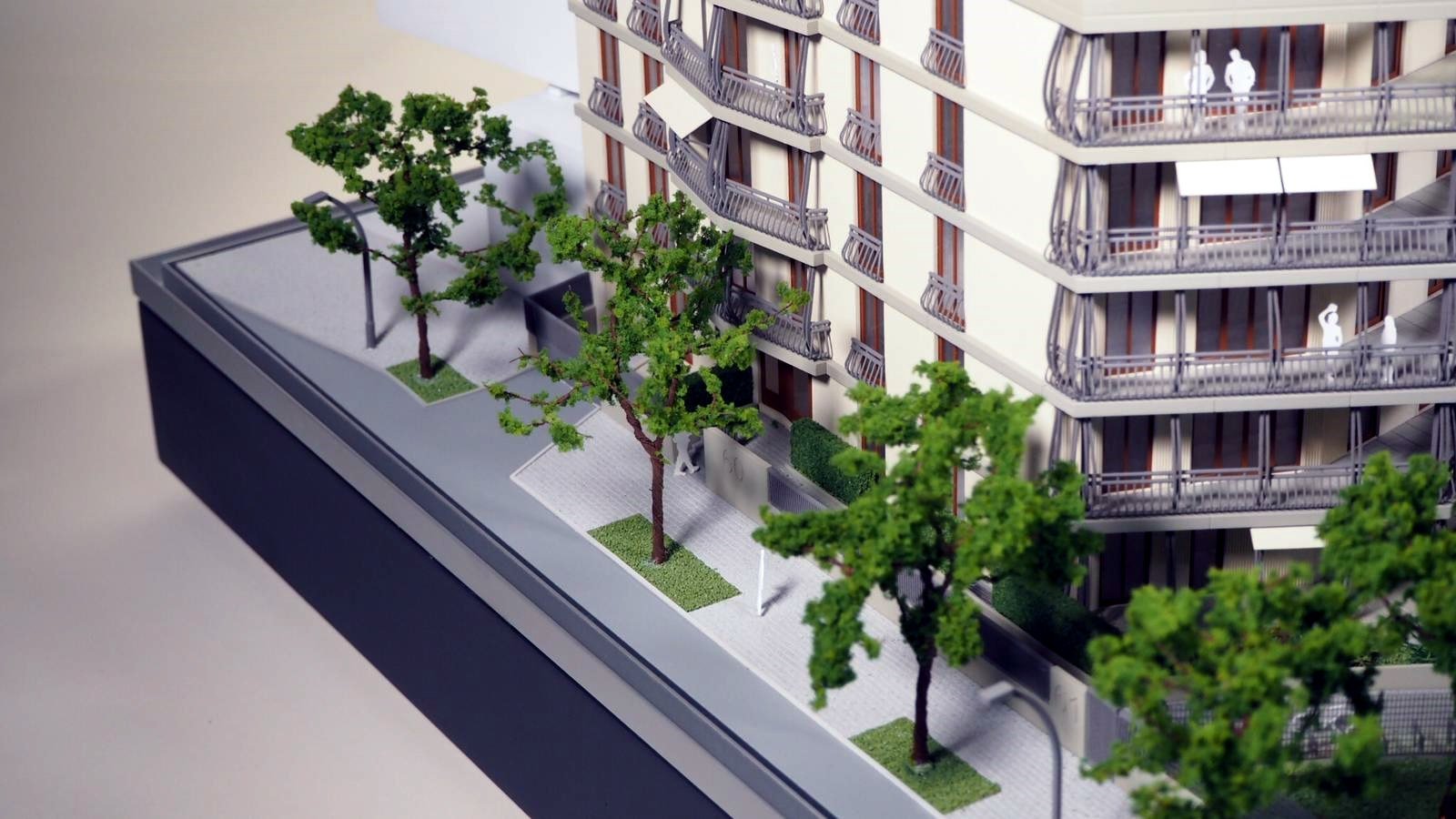Understanding Architectural Model Making
What is Architectural Model Making?
Architectural model making is the intricate craft of creating physical representations of buildings, structures, and landscapes. This process plays a crucial role in the architectural field, as it enables architects and designers to visualize concepts that often start as abstract ideas or digital blueprints. In Leipzig, a city renowned for its rich architectural history and vibrant arts scene, architectural model maker Leipzig are essential partners for bringing designs to life. They employ various materials and techniques to create models that convey the nuances of scale, proportion, and fine details.
The Importance of Models in Architecture
Models serve several significant purposes in architecture. First and foremost, they provide a tangible representation of a project, allowing clients, stakeholders, and team members to grasp the design intent more fully. A well-crafted model can evoke a sense of space and atmosphere that digital renderings often cannot convey.
Furthermore, models are invaluable during presentations, as they can illustrate complex concepts effectively and foster dynamic discussions among architects and clients. They allow for the identification of design flaws early in the process, saving time and resources in the long run.
Types of Architectural Models
Architectural models can be categorized into three main types: conceptual, presentation, and working design models. Each type serves distinct purposes:
- Conceptual Models: These are typically the first representations created to explore ideas. They emphasize form and spatial relationships rather than intricate details.
- Presentation Models: Designed for client presentations and public exhibitions, these models are crafted with high detail and aesthetics in mind, often using premium materials to impress stakeholders.
- Working Design Models: These serve as functional tools in the design process. Designed for testing various aspects of the project, such as structural integrity and environmental impact, they are often made from cheaper materials.
Services Offered by Architectural Model Maker Leipzig
Customized Models for Diverse Projects
An architectural model maker in Leipzig offers a broad spectrum of customized services that cater to different project requirements. Whether it’s a real estate development, a cultural landmark, or an industrial facility, skilled model makers work closely with architects to produce models that embody the vision of the project.
Each model is tailored to reflect the unique characteristics of the project, including the surrounding environment, materials, and architectural styles. This customization is crucial in demonstrating how the project integrates with its context, enhancing both functionality and aesthetic appeal.
Full-Service Model Building Process
The model-making process can be quite elaborate, generally involving several stages:
- Initial Consultation: This step involves discussions between the client and designer to outline the project scope, objectives, and budget.
- Design Conceptualization: After gathering requirements, the model maker develops initial sketches and digital designs to explore various possibilities.
- Material Selection: Choosing the appropriate materials is key to achieving the desired look and feel of the model. Common materials include wood, acrylic, foam, and even 3D-printed elements.
- Fabrication: This phase involves the actual building of the model, where skilled hands transform the sketches into tangible forms.
- Finishing Touches: Detailing the model with appropriate landscaping, lighting, and textures brings it to life, ensuring every aspect is meticulously crafted.
The full-service nature of model making in Leipzig allows clients to rest assured that their projects are being handled with professionalism and expertise at every stage.
Collaboration with Designers and Architects
Collaboration between model makers and architects is paramount in the architectural model-making process. Successful model makers in Leipzig understand the unique language of architecture, which enables them to translate architectural drawings into dynamic three-dimensional representations.
During the collaboration, model makers provide invaluable feedback and suggestions based on their hands-on experience, helping architects refine their designs. This synergy not only improves the final product but also fosters innovation in design approaches, ultimately enriching the field of architecture.
Choosing the Right Model Maker in Leipzig
Evaluating Experience and Portfolio
Selecting the right architectural model maker involves assessing their experience and portfolio. A seasoned model maker will have a diverse range of projects that showcase their ability to handle various styles and complexities. When reviewing portfolios, consider factors such as:
- Variety of models created, from conceptual to highly detailed presentation models.
- Quality of craftsmanship, focusing on attention to detail and the use of appropriate materials.
- Reputation in the industry; look for testimonials or case studies from previous clients.
Understanding Cost Structures
Cost is a critical factor in choosing a model maker. Prices vary widely based on the complexity, size, and materials used in the model. It’s essential to obtain detailed quotes that break down costs for each stage of the model-making process. Understanding the cost structure helps clients make informed decisions and ensures that the project stays within budget.
Common costs associated with architectural models include materials, labor, finishing details, and transportation. Be aware of any additional fees that may arise from unexpected modifications or time extensions.
Client Testimonials and Case Studies
Positive feedback from previous clients is a vital indicator of a model maker’s capabilities. Look for testimonials that highlight not only the quality of the work but also the professionalism and responsiveness of the model maker. Case studies, which detail specific projects, can provide deeper insights into how the model maker approached challenges, collaborated with architects, and delivered successful outcomes. This information is crucial when making your final selection.
Best Practices in Model Making
Materials and Techniques Used
The choice of materials and techniques significantly impacts the quality of architectural models. Commonly used materials include:
- Balsa Wood: Lightweight and easy to cut, making it popular for preliminary models.
- Acrylic: Ideal for creating sleek, modern designs, offering clarity and light diffusion.
- Foam Board: Cost-effective for conceptual models, giving a good sense of scale.
Advanced techniques such as laser cutting, 3D printing, and CNC milling are also becoming more prevalent in the industry. These technologies allow for precision and complexity that traditional methods may not achieve, enhancing the final product’s quality.
Tips for Effective Communication with Model Makers
Effective communication is a cornerstone of a successful model-making project. Here are some tips to ensure seamless collaboration with your model maker:
- Be clear about your vision and objectives — the more information you provide, the better they can meet your needs.
- Share reference materials such as sketches, images, and previous models that reflect your expectations.
- Maintain an open line of communication throughout the process, addressing any concerns or questions promptly.
- Schedule regular check-ins to discuss progress and ensure alignment on the project goals.
Meeting Project Deadlines and Quality Standards
Project deadlines and quality standards are critical metrics in architectural model making. To ensure that your project remains on track, establish a timeline during the initial consultation and regularly review progress against this timeline. Models can often take several weeks to months to complete, depending on their complexity, and it’s essential to factor in all stages from design to fabrication.
Additionally, set clear quality expectations from the outset. High standards are non-negotiable, and both parties should agree on what constitutes an acceptable finished product. Regular feedback will help maintain quality throughout the process.
Future Trends in Architectural Model Making
Impact of Technology on Model Making
As with many industries, technology is rapidly evolving the field of architectural model making. Innovations such as virtual reality (VR) and augmented reality (AR) are beginning to play significant roles in how models are created, shared, and experienced. By leveraging these technologies, architects can provide immersive experiences that allow clients to visualize projects in a more tactile and engaging manner.
Additionally, advancements in materials such as smart materials, which can adapt to environmental changes, are starting to impact model design, making them more relevant and reflective of real-world applications. The use of AI in model design is also on the rise, helping streamline processes and improve design iterations based on analytics and data.
Eco-Friendly Practices in Model Production
With growing awareness of sustainability, many architectural model makers in Leipzig are adopting eco-friendly practices. Utilizing sustainable materials, such as recycled plastics or FSC-certified wood, reduces the environmental footprint of model production. Furthermore, reducing waste by using digital processes and cutting technologies minimizes excess materials from prototyping phases.
Additionally, practices such as proper waste management, recycling scrap materials, and sourcing local supplies can enhance sustainability in the model-making process. Architects and designers are increasingly looking for partners who prioritize sustainable practices in their work.
Innovative Design Trends in Architecture Models
The world of architectural models is witnessing innovative design trends that reflect the evolving nature of architecture and society. Minimalist design trends emphasize simplicity and clarity, resulting in models that focus on essential elements without unnecessary details.
Furthermore, interactive models that incorporate lighting and moving parts are gaining popularity. These dynamic features enhance engagement and allow users to experience the design more fully. Moreover, as buildings become more complex in design, intricate models with detailed landscaping and urban settings are becoming a norm in presentations.
Ultimately, innovation in architectural model making is expected to continue evolving, with the goal of creating models that are not just functional tools for understanding designs but also artworks in their own right.



